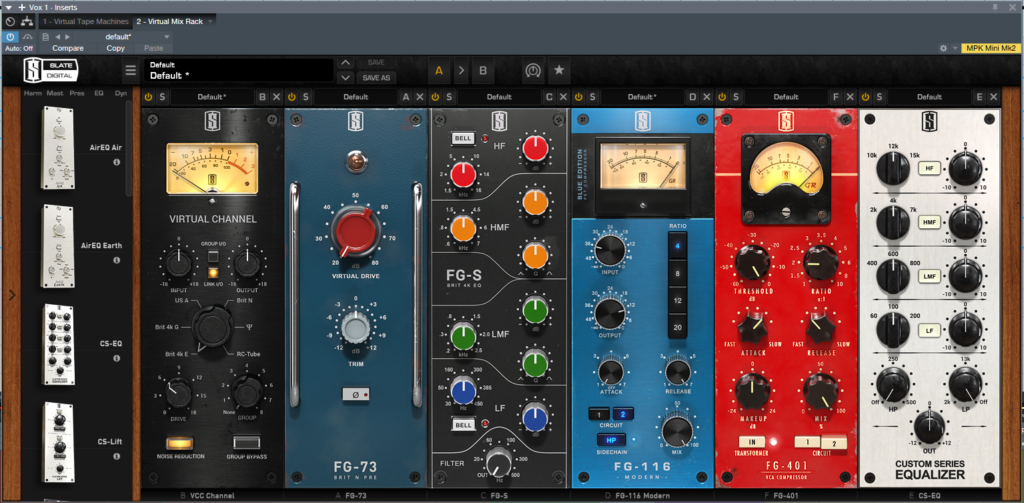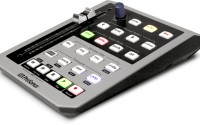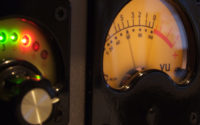5 Ways To Get Out Of Your Own Way In Your Home Studio
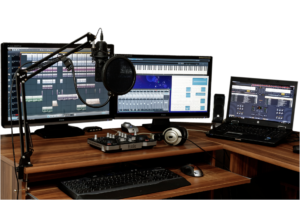
I’ll be the first to admit: I can be a pretty lazy fellow. Filed under first world problems: it’s just so much work to set up a mic, check levels, and even *gasp* record a take.
I get it. Automation can be time consuming. Setting up new tracks, sends, mics, instruments. I wish I had a studio fairy that would just take care of all that for me. Poof! Mic set up, levels optimal, tracks armed.
Alas, we live in the real world, and unless you have a studio assistant/gopher, we have to do all these little things all the time. But there are a few things we can do to speed things up and get out of our own way in the home studio – which will make your time spent in the studio much more productive.
Studio Layout
We’ll start with the most simple aspect of your home studio: how it’s physically laid out within the room you’re in.
Assuming you’ve already got an ideal arrangement doing with your desk and monitors (equilateral triangle between the monitors and your head, centered on the wall, speakers firing down the longer dimension of the room), I urge you to build everything around that desk. Get a little feng shui with your studio!
As an example, my go-to acoustic microphone is sitting on a stand, always plugged in, ready for me to simply move into position to record a take, should inspiration strike. When I’m done with it, I just move it out of the way, turn off the phantom power, and protect it from dust. It takes me less than 10 seconds to go from thinking of an acoustic part, to hitting record on the first take.
My recording interface is a PreSonus FireStudio Project, with 8 inputs. Since most of what I record is my own stuff, each of those inputs is set to a particular level, and dedicated to a different setup. One is always capturing guitar and bass DI’s, one has the gain set for my SM7B, another for my GXL2200 large diaphragm, two for the small diaphragm condensers, and a couple open ones for the occasion I have another musician in here.
Take a look around your studio. What are the things you use most often, the things you always setting up and tearing down. Check with owners manuals and be mindful of your electric bill, but I bet there are things you could leave plugged in, setup (or at least half setup), and within arms reach that would speed up your workflow immensely once you start adding all the little moves up.
DAW Templates
Okay, it’s not the sexiest, coolest, slickest thing to talk about, but I still think it’s important.
How many times have you started recording a new song, and you’ve set up the same reverb, the same bus routing, the same virtual instruments, nearly every single time you fire up your DAW? If this sounds like a common occurrence to you, please, please, PLEASE, set up a DAW template or two.
Start with a blank session in your DAW, and think about how you tend to write music, or if you’re recording other musicians, what sort of tracks you tend to see. Or even take a recent session where you’ve already set all up all your chains and routing, save a copy of that, and deconstruct it until you’re left with something you can use over and over again.
Will a template cover every single recording and mixing setup you’ll come across? Probably not. But you can save yourself a lot of work if you set up some of your most common scenarios ahead of time. Just to get you thinking about it a little bit, I almost always use a plate reverb on vocals, so I have a send with a plate ready to go. Same with a couple delays set to the session tempo, a few parallel chains ready for crushing drums, a bunch of busses for common instruments (drums, bass, guitars, keys, vocals, etc). I’ve also got the same plugins on the master fader, bypassed, and waiting for me to turn them on when I’m ready.
Whenever I get a song idea and want to start sketching it out, everything’s ready for me to go, and it’s just that much less I have to set up every single time.
Keyboard Shortcuts
Again, not the most glamourous subject, but another important one. I HATE hunting through menus and moving my mouse across the screen to get things done. If I find out something that I do over and over can be done with a keyboard shortcut, I’m all over that.
In fact, in most DAWs, keyboard shortcuts tend to stare you dead in the eyes. Whenever you right click on, or hover over something, most modern DAWs will tell you a quicker way to get that task done with a keyboard shortcut.
In Studio One, my preferred DAW, the number keys switch between tools (and a recent update made the main tool smarter so it switches tools based on context). The space bar starts and stops the transport. F3 toggles the console/mixer view. I even have an EditorsKeys Studio One keyboard with all the common shortcuts laid out for me. It may not seem like much, but when you add all those little moves together, you can save a bunch of time, without breaking your concentration.
(Bonus Tip for Studio One Users) – Check out this video from the awesome folks at Studio One Expert on how to use Macros, and set up your own keyboard shortcuts to chain together multiple commands.
Control Surfaces
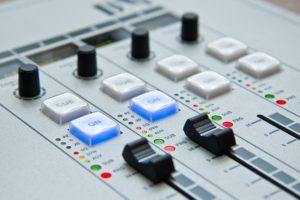 This is the only one on this list where I’m advocating spending a little money in exchange for a quicker, more intuitive workflow. Modern DAW mixing can be done completely with a mouse and keyboard, and if that’s the way you want to attack it, be my guest.
This is the only one on this list where I’m advocating spending a little money in exchange for a quicker, more intuitive workflow. Modern DAW mixing can be done completely with a mouse and keyboard, and if that’s the way you want to attack it, be my guest.
However, I’d argue you’ll get a much more rewarding experience if you’re drawing in automation and adjusting plugins with faders and knobs, rather than using a mouse and keyboard.
The sky’s the limit when it comes to control surfaces. If you already have a MIDI keyboard, you can map knobs, pads, and faders to control plugin parameters and volume levels (I’m a fan of the Akai MPK Mini mkII for its small footprint). You can get something as simple as the Presonus Faderport – one fader, one knob, and a bunch of DAW and transport controls, or something with 8, 12, 16, or more faders and really control your whole mix as if you were on a large format console. Budget it obviously going to play in here, but consider getting something to get your hands on your mix.
As an example, I’ve ridden filters/wah effects with my FaderPort’s fader, I’ve automated rotary speaker speeds on virtual organs using knobs on my MPK. Anywhere it’d arguably be easier to do something with a knob or fader, than drawing curves with a mouse, my hands are on some sort of control surface.
Plugin Chain Presets
This one ties in a bit with the Templates point above.
I have a very love-hate relationship with plugin presets. On the one hand, I love a good preset in a more “effect-y” plugin. Delays, reverbs, choruses, anything that isn’t a compressor/EQ. Factory presets in these can be a great way to learn what these plugins are capable (I’m still learning something about SoundToys’ EchoBoy every day). They can also help you get out of a rut. If a snare isn’t jiving with you and you’re flat-out stuck, slap something on there and start cycling through presets until something catches your ear. Even if you don’t use that preset, or even that plugin, it might give you an idea.
On the other hand, I severely dislike compressor and EQ presets. How does Plugin Company X know that my electric guitars are going to sound good through their “Rock Guitar 2” EQ preset?? (Hint: it usually doesn’t)
Okay. Got that out of the way.
When I say plugin chain presets, think of it this way. Maybe you’ve become fond of the way a certain compressor plugin sounds on vocals. You likely won’t use the same settings each time you put it on a vocal, but you might still go for that compressor first before anything else. Why not set that compressor up in your template (see above!) so it’s ready for you to engage and tweak? Same for EQs!
As an example, below is the vocal chain in my DAW, using Slate’s Virtual Mix Rack.
Mic preamp emulation, into an EQ that I like to cut out annoying frequencies, into two compressors, into one more EQ to add some sweetening and get it to shine in the mix.
Each of those modules are set to their default settings. I don’t always EQ and compress vocals the same way… but I do (almost) always use these plugins, in this order, to get a sound I like.
Consider setting a few of these up as presets. If you find yourself going for the same EQ and compressor on a kick drum, even if you don’t always use the same settings from song to song, set that up so it’s ready for you to go whenever you get a kick drum. Sure, you may end up with a mix that calls for an entirely different chain every now and then, but plan for the majority, and you’ll be setting yourself up to win.
Get Out Of Your Own Way
I hope you’ve found these helpful. They all been instrumental in helping me speed up my workflow, get out of my own way, and keep me from losing focus once I’m in the zone. Habits die hard, so it may be difficult to address all five of the points in one fell swoop.
My challenge to you: choose one of the five points above, and address them in your studio today. When you get home from work or school tonight, build yourself a DAW template. Or rearrange a few things in your room to better facilitate making music. Whatever it is that’s slowing you down, address it today. The dividends after the initial time investment are huge.
Happy music making!
